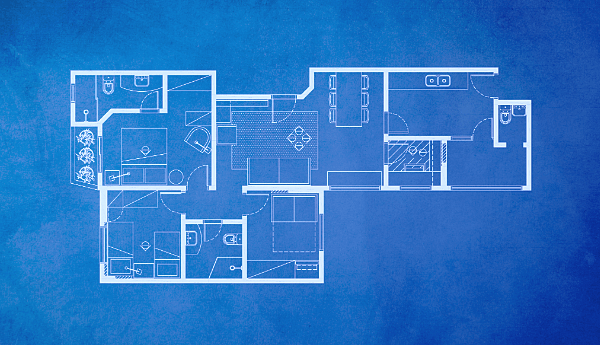


Author:
Revised:
February 20th, 2024
Have you ever wondered why residential HVAC systems cost an arm and a leg? Don’t worry; we won't take any of your appendages as payment, but it’s important to know and understand the factors that influence the price of a new heating and cooling system.
At Fire & Ice, we have installed thousands of new HVAC systems throughout Columbus, Ohio. We understand a new HVAC system can be a considerable investment. That’s why our mission is: “To serve our customers in a fair and honest manner through hard work to achieve 100% satisfaction.”
By the end of this article, we hope homeowners like yourself will have the knowledge and understanding of the seven factors that influence the cost of a full HVAC system installation.
Let’s get started!
1. Type of HVAC System
In the HVAC industry, the cost of a new system is significantly influenced by the type of system chosen. The options include 80% or 90% efficient systems and combinations of air handlers/ heat pumps. So, what are the differences?
80% Efficiency
An 80% HVAC system is your typical, run-of-the-mill, standard-efficiency heating and cooling system. These systems are generally more affordable than others since they require fewer materials, which, in turn, decreases the price of equipment and labor. While these systems are more affordable, they tend to have lower energy efficiency and life span than a 90% system.
90% Efficiency
Extra steps are involved when upgrading from an 80% to a 90% efficient HVAC system. The 90% efficient furnace needs an exhaust pipe and an intake pipe, each of which is about 20-30 feet long, which requires your HVAC installation team to drill new holes in the side of your house to install them.
Also, a 90% furnace creates water as it works (a by-product of being more efficient). Because of this, an additional drain is needed to get rid of this water. This part of the installation process takes extra materials, time, and work, which adds to the overall cost of your HVAC system. However, while these systems are more expensive, they have a longer life span and higher energy efficiency.
Air Handler/ Heat Pump
An air handler and HVAC heat pump system differs from the traditional 80% and 90% systems. However, there are advantages, such as its simplicity of connections and if your home's ductwork doesn't need modifications.
Despite this, the installation process presents a challenge. Unlike a gas furnace that sits directly on the floor, an air handler often needs an additional box installed underneath it, which can complicate, lengthen, and raise the installation cost.
2. Where is Your HVAC System Located?
When determining the cost of a full HVAC system, it's crucial to know the system's location, such as in a garage, attic, closet, or basement. Typically, if your HVAC system is located in an attic, it increases the cost because attics are typically harder to reach, especially if there isn't any insulation or ductwork installed.
 Image Source: jailce
Image Source: jailce
For example, this past summer, we took a job where the HVAC was located in the attic with no ductwork or insulation. Because of this, we had to add everything from scratch, which took five days.
To put that in perspective, we could do that same installation in a basement in about three days. That said, the location of a system can add a lot to the cost of a new system because of the time, effort, and materials needed.
3. Size of HVAC System
Did you know that The Department of Energy estimates that over half of HVAC professionals in the U.S. are sized incorrectly? When determining the system size you need to adequately heat and cool your home, your HVAC professional should complete a Manual J Load Calculation, which is required by ACCA (Air Conditioning Contractors of America). This calculation takes several factors specific to your home into account to ensure the correct fit for your HVAC system; this includes, but is not limited to:
- Square Footage
- Size & Number of Exterior Windows and Doors
- Number of Occupants
- Overall Humidity
- The Direction Your Home Faces
4. Energy Efficiency of a Residential Heating & Cooling System
As a general rule of thumb, the higher the energy efficiency, the higher the cost of an HVAC system. Energy efficiency is measured by the units SEER2 (Seasonal Energy Efficiency Rating), EER2 (Energy Efficiency Ratio), HSPF (Heating Seasonal Performance Factor), and AFUE (Annual Fuel Utilization Efficiency).

At this point, you’re probably wondering what a good rating is for each of the HVAC efficiencies in Columbus, Ohio; let’s review them together.
- SEER2: A rating of 13.4 or more.
- EER2: Typically isn’t used in the northern region; nevertheless, a good EER2 rating is at least 12.2.
- HSPF2: A good HSPF rating is 7.5 or higher.
- AFUE: A percentage of 90% or greater.
5. HVAC Ductwork Modifications
Ductwork modifications can include a second air supply, a return air drop, or adding/removing ductwork to reach all of the living spaces in your home. However, those kinds of modifications add time and materials to a job, thus increasing the cost of your HVAC system.
But having more control over your comfort is a trade-off, meaning you have the best equipment for your home and your loved ones. Nevertheless, if you are a homeowner who has the means to invest in a new HVAC system, you should want your HVAC contractor to take the time to ensure airflow is right throughout your home.
6. Zones & Controls of an HVAC System
This means dividing your house into different areas or “zones” that can be heated or cooled separately and controlling them with special devices (like zone dampers and thermostats). The more zones and controls you have, the more wiring, materials, and time it takes to check to make sure everything works right.
While the upfront cost of zoning can be steep, it saves energy, increases comfort, and can lower your monthly utility bills since you're not wasting heat or air conditioning on these unused spaces.
7. Additional Accessories for your Heating & Cooling System
The comfort of your home is what you make it. Within the scope of heating and cooling, there are additional products you can purchase to help with your IAQ (Indoor Air Quality) or surge protection; however, these will increase the cost of your full system installation. Let’s look at some of your options.
- REME HALO: This air purifier uses UV light and a special vapor to clean the air in your home. It spreads this vapor through your home's air system, helping to get rid of bacteria and viruses like the coronavirus by targeting impurities in the air as they pass through your HVAC system.
- HALO LED: This accessory uses LED lights instead of UV lights to clean the air in your home. It’s installed directly into your HVAC system and targets the three main sources of indoor air pollution: tiny particles, germs, and gases.
- Aprilaire Humidifier: This HVAC accessory can add up to 17 gallons of water to your home's air daily. Doing so helps protect things like wood floors and furniture from cracking. It also balances the humidity in your home, leading to better sleep, less dry skin, and fewer nosebleeds.
- Aprilaire Dehumidifier: On the other hand, a home with too much humidity is also a problem. This accessory removes the extra moisture within your home, preventing mold growth and spreading allergens. Also, this accessory is a great investment if you have a basement prone to flooding.
What’s Next?

As you can see, the cost of a furnace has many factors, and a homeowner's wants and needs can vary. However, you must make the best purchase decision for you, your home, and your wallet. Therefore, it's important to consider all these aspects when budgeting for a new furnace.
Now that you know the seven factors that influence the overall cost of a full HVAC installation, your next step is to check out our article, HVAC Financing: A Complete Buyers Guide.
Or, if you’re ready to have one of our residential comfort specials come out for a free in-home estimate, enter your zip code below to get started!




























